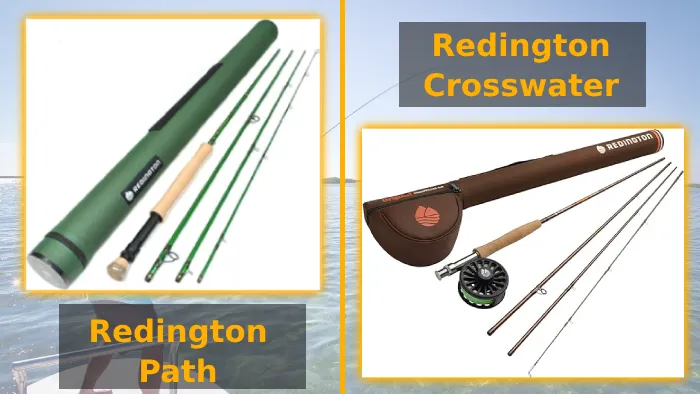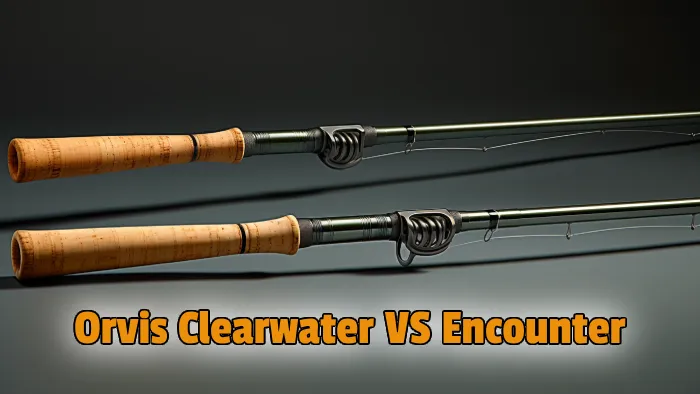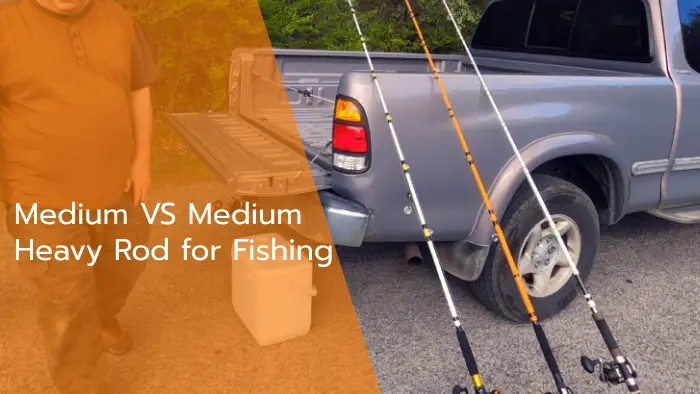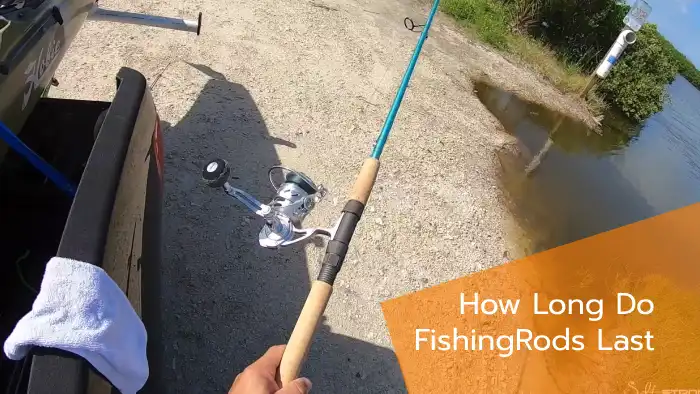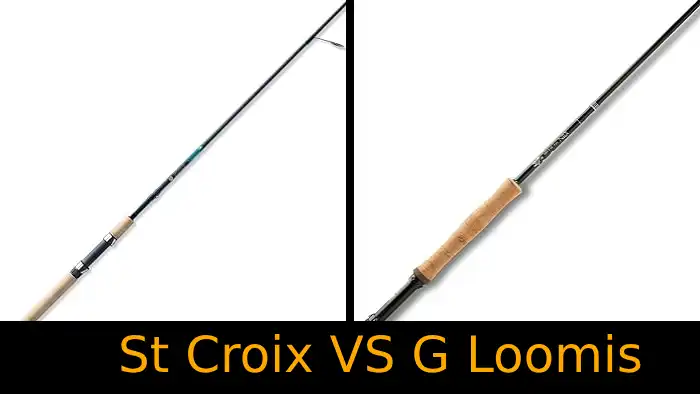Redington Path vs Crosswater Fishing Rod: 10 Differences
Anglers often find themselves faced with a multitude of options from various manufacturers when choosing a fly fishing rod. Two popular choices in the world of fly fishing are the Redington Path and Crosswater fishing rods. These rods offer distinct features and cater to different preferences and skill levels.
The Redington Path features a faster action, making it ideal for dynamic and powerful casts, whereas the Crosswater offers a slightly slower, more forgiving action.
Due to its premium features and materials, the Path series typically commands a higher price point. The Crosswater is an affordable option that appeals to budget-conscious anglers.
With our impartial and detailed analysis, you’ll have all the information you need to make the right choice. So, get ready to reel in some knowledge and find the perfect rod for your next fishing adventure.
Differences between Redington Path and Crosswater Fishing Rod
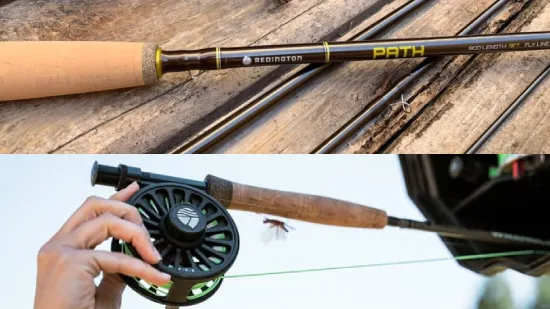
When comparing the Redington Path and Crosswater fishing rods, there are several key differences to consider.
- Material and construction
- Flexibility and action
- Range of models and lengths
- Reel seat and handle design
- Fishing skill level
- Durability
- Freshwater and saltwater suitability
- Specific use cases
- Target species and fishing conditions
- Pricing
No 01. Rod Material and Construction
Both rods are constructed with high-quality graphite material, ensuring strength, sensitivity, and a lightweight feel during your fishing adventures.
The graphite construction of the Redington Path rod offers excellent corrosion resistance.
On the other hand, the Redington Crosswater rod shares the same high-grade graphite material, providing a responsive fishing experience.
Due to the addition of a stainless steel wire in the construction, Crosswater rods are slightly stronger and more rigid than Path rods.
No 02. Rod Flexibility and Action
The Path’s fast action allows for quick and powerful casts, making it ideal for experienced anglers who prefer a more dynamic fishing experience. Its flexibility also allows for accurate and controlled presentations, enabling anglers to target specific areas with precision.
Conversely, the Crosswater’s slightly slower action provides a more forgiving and relaxed casting experience, making it suitable for anglers of all skill levels. While the action may be slower, the Crosswater still offers excellent flexibility, allowing for effective line control and accurate casts.
No 03. Range of Models and Lengths
The Redington Path fly rod offers different models with various lengths and line weights, allowing you to choose the perfect combination for your fishing style and target species. It ranges from 4 to 9 weight options, which allows anglers to choose the rod that suits their specific fishing needs.
Similarly, the Redington Crosswater fly rod also offers a range of models with different line weights and lengths, catering to your preferences and fishing needs.
But the Redington Path series has more options in terms of line weights, giving you greater flexibility when choosing the right rod. This is especially useful if you’re targeting different species of fish.
No 04. Reel Seat and Handle Design
The Redington Path fly rod offers the option of laser-etched wooden or anodized aluminum reel seats. These choices not only provide a visually appealing touch but also ensure durability and functionality.
On the other hand, the Redington Crosswater fly rod features an anodized aluminum reel seat, prioritizing durability while maintaining a sleek appearance.
Both rods have comfortable handle designs that vary based on their weight. The Redington Path rod aims for an ergonomic grip, ensuring comfort during long casting sessions. Similarly, the Crosswater rod also offers comfortable cork handles designed to provide anglers with a secure and comfortable grip.
No 05. Fishing Skill Level
If you’re considering the Redington Path and Crosswater fishing rods, you’ll notice differences in fishing skill level requirements.
The Redington Path is designed for serious fly anglers who’ve experienced and require precision and versatility in their fishing equipment. It’s well-suited for both freshwater and saltwater applications, making it ideal for experienced anglers seeking a long-lasting fly rod.
Meanwhile, the Redington Crosswater is positioned as an entry-level choice, making it a great choice for beginners. Its medium-fast action strikes a balance between flexibility and power, allowing novice anglers to develop their skills.
No 06. Durability
The Redington Path fly rod includes a durable Cordura rod tube for storage, while the Redington Crosswater comes with a cotton rod sock.
The Cordura rod tube provided with the Redington Path offers a higher level of protection for the rod during transportation and storage. Cordura is known for its resistance to tears and abrasions, making it a durable choice for rod storage. The tube ensures that the rod remains safe from accidental impacts and potential damages.
Alternatively, the cotton rod sock provided with the Redington Crosswater serves as a basic protective cover for the rod. While it may not offer the same level of durability as the Cordura tube, it still provides some protection against scratches and minor dings.
No 07. Freshwater and Saltwater Suitability
The Path’s versatility allows you to effortlessly switch between different fishing settings, whether you’re casting in a calm river or tackling the waves of the ocean. Its construction and design features, such as the corrosion-resistant components and sturdy graphite blank, ensure its durability and performance in various conditions.
Similarly, the Crosswater fly rod is designed to handle the challenges of both freshwater and saltwater fishing. But, due to its lightweight and durable construction, it is more resistant to saltwater environments than the Path series without sacrificing functionality.
No 08. Specific Use Cases
Whether you’re fishing in freshwater or saltwater, targeting small trout or large salmon, there’s a Path model that suits your needs. The Path’s premium construction and materials ensure durability and performance in a wide range of fishing situations.
On the other hand, the Redington Crosswater’s ease of use and medium-fast action make it ideal for learning and practicing fly fishing techniques. Despite not offering the same level of versatility as the Path, the Crosswater certainly gets the job done for those starting out or engaging in casual fishing trips.
No 09. Target Species and Fishing Conditions
Whether you’re targeting trout in a river or bass in a lake, the Path rod’s responsive action and sturdy construction will provide you with the performance you need.
As an alternative, you can cast the Crosswater rod for panfish or smallmouth bass. The Crosswater rod’s balance and sensitivity will make fishing easier.
No 10. Pricing
Redington Path fly rods typically cost more than the Crosswater series, but the extra cost reflects the additional features and warranty coverage offered by Path. The Path rod boasts a higher quality construction, with a graphite blank that provides increased sensitivity and responsiveness.
In contrast, the Redington Crosswater fly rod is known for its affordability, making it an excellent choice for beginners and anglers on a budget. Despite its lower price point, the Crosswater rod still offers decent performance and durability, making it a reliable option for casual anglers.
Comparison Table Between Redington Path and Crosswater
| Aspect | Redington Path | Redington Crosswater |
| Rod Material | Graphite | High-grade graphite |
| Range of Models | Wide variety of lengths & weights | Various line weights & lengths |
| Reel Seat & Handle | Wooden or anodized aluminum reel seat, comfortable handle | Anodized aluminum reel seat, cork handle |
| Pricing | Higher price range | Affordable |
| Skill Level | Suitable for experienced anglers | Entry-level choice for beginners |
| Storage Accessories | Cordura rod tube included | Cotton rod sock provided |
| Freshwater/Saltwater | Suitable for both | Versatile for multiple settings |
| Flexibility & Action | Medium-fast to fast action | Medium-fast action |
| Target Species & Conditions | Versatile for various species & environments | Primarily for freshwater species |
Is Redington a good fly rod?
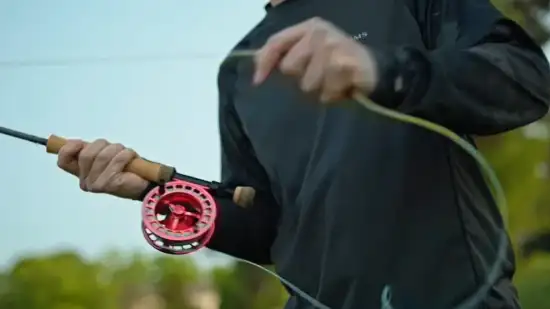
You’ll find that Redington is a good fly rod for its price range. The Redington rod performs well and gets the job done efficiently. It may be a bit heavier than some other options, but it’s still comfortable to handle. Regarding casting dries, the Redington Path and Crosswater series rods perform admirably.
Moreover, Redington is known for producing quality products, so you can trust that their fly rods are well-made and reliable.
Where are Redington rods made?
Redington rods are made in Korea. The company has chosen Korea as the manufacturing location for its fishing rods due to various reasons.
Korea is known for its advanced manufacturing capabilities and skilled workforce, which ensures that Redington can produce high-quality rods that meet the demands of anglers. The country also has a strong reputation for producing fishing equipment, making it a favorable choice for Redington.
What is the Redington Crosswater reel made of?
The Redington Crosswater reel is made from durable polymer materials that offer style and function. Using these polymer materials ensures the reel’s reliability and longevity due to its unique design.
Polymer is used in constructing the Crosswater reel to provide several benefits. Firstly, it offers exceptional durability, making the reel capable of withstanding the rigors of regular fishing activities. Secondly, it provides a lightweight option for ease of use and comfortable handling.
Additionally, the polymer material used in the Crosswater reel contributes to its stylish appearance, making it an attractive choice for anglers.
Redington’s Path or Crosswater Fishing Rods: Tailored to Your Needs
When choosing between the Redington Path and Crosswater fishing rods, you must decide what you like and need as an angler.
With its premium graphite construction, fast action, and versatile range of models, the Path series is tailored for experienced fly fishermen seeking precision and adaptability in various fishing weather conditions.
Conversely, with its affordability and medium-fast action, the Crosswater series serves as an excellent entry point for beginners and casual anglers looking to explore the joys of fly fishing.
Both series offer reliable performance and durability, making Redington a trusted name in fly rods. The brand provides quality options for anglers at different skill levels and budgets.

